Did you know that around 77% of internet users read blogs?
Technical blogs are a valuable platform for sharing knowledge, insights, and expertise with a broader audience.
Whether you are a technology enthusiast, an industry expert, or a professional in a specific field, writing a technical blog can help you establish credibility, connect with like-minded individuals, and contribute to the larger tech community.
In this article, we will explore essential tips and strategies to help you write an effective technical blog that engages readers and delivers value.
What is a technical blog?
A technical blog is a type of blog that focuses on topics related to technology, science, or any specific technical field. It serves as a platform for individuals or organisations to share their knowledge, expertise, insights, and experiences in a particular technical area.
Technical blogs cover a wide range of subjects, including software development, programming languages, web development, cybersecurity, data science, artificial intelligence, hardware reviews, product comparisons, tutorials, troubleshooting guides, and industry trends.
You may come across various types of technical writing written by professionals, enthusiasts, industry experts, or organisations with expertise in the field.
The primary purpose of a technical blog is to educate and inform readers about technical topics. Bloggers often share their experiences, tips, and best practices, providing valuable resources to their audience. Technical blogs may include code snippets, diagrams, screenshots, or other visual aids to enhance understanding.
13 Tips to Help You Create a Technical Blog That Resonates With Your Customer
Following are some points that you should consider while writing a technical blog:
1. Identify Your Target Audience
Before you start writing, clearly define your target audience. Are you addressing beginners, intermediate-level readers, or experts in the field?
Understanding your audience’s knowledge level, interests, and needs will help you tailor the type of content you are writing appropriately. Consider their background, familiarity with technical concepts, and the problems or challenges they might face.
This understanding will guide your content creation process.

2. Choose Relevant and Engaging Topics
Selecting the right topics is crucial for attracting readers to your technical blog. Stay updated with the latest industry trends, emerging technologies, or common challenges faced by professionals in your field.
Look for knowledge gaps that you can fill with informative content. Aim to provide practical solutions, insights, or tutorials that add value to your readers’ lives.
Research popular keywords and search queries to ensure your blog is discoverable. For a better understanding of primary, secondary and LSI keywords, read our blog on keyword research and usage.

3. Structure Your Blog Effectively
A well-structured blog enhances readability and comprehension.
Use headings, subheadings, and bullet points to organise your content. Then, introduce the topic in a concise and engaging manner. Break down complex concepts into digestible sections. Use examples, case studies, or real-life scenarios to illustrate your points.
Remember to include a clear introduction, body, and conclusion to provide a logical flow to your content.
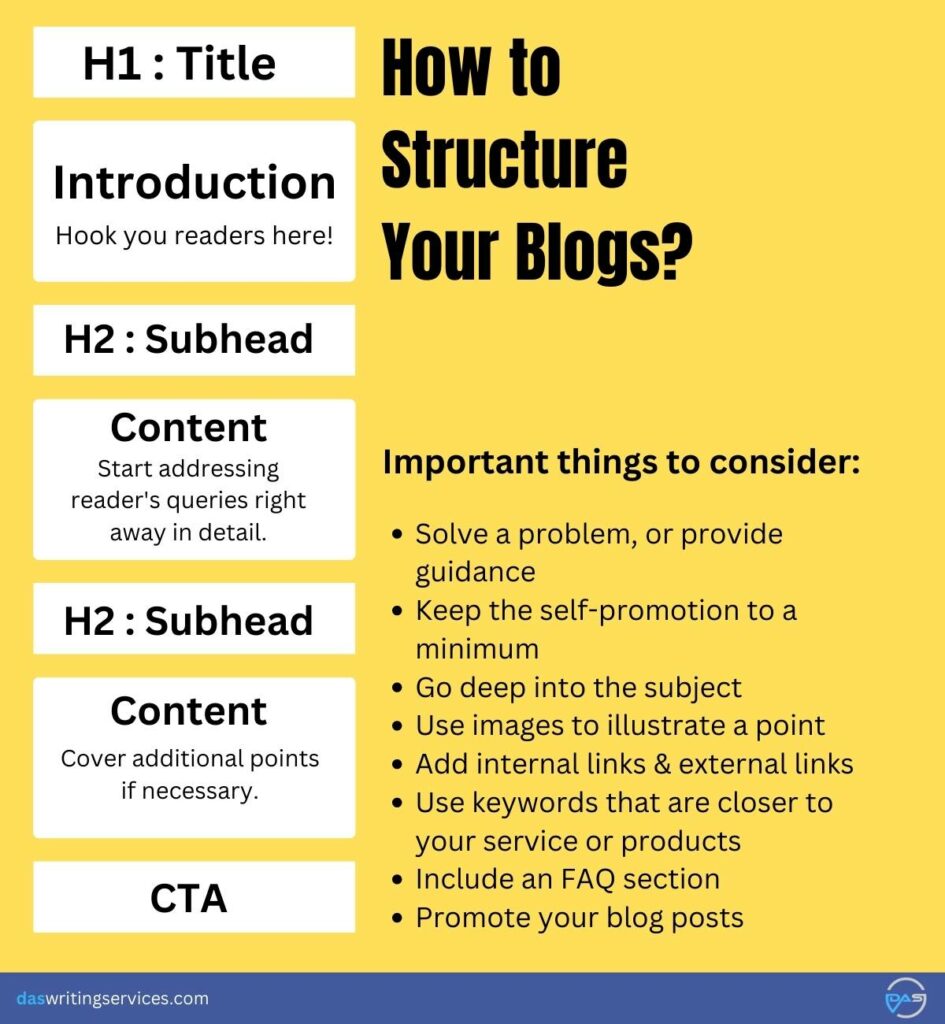
4. Write in Clear and Concise Language
Technical blogs require clarity and conciseness to effectively communicate complex ideas.
Avoid jargon or excessive technical terms unless your target audience is familiar with them. Use simple language that your readers can easily understand. Define any technical terms you use and provide explanations when necessary.
Be mindful of your tone and strike a balance between professionalism and approachability.
5. Include Visuals and Examples
Visual elements such as images, diagrams, charts, or infographics can enhance understanding and engagement.
Use visuals to complement your written content, illustrate concepts, or present data. Screenshots or step-by-step visual guides can be beneficial in technical tutorials. Additionally, provide examples or use cases to demonstrate the practical application of the information you’re sharing.

6. Incorporate Relevant External Links
Support your blog with credible references and external links to reputable sources.
This adds credibility to your content and enables readers to explore further. Linking to authoritative websites, research papers, or relevant articles can provide additional context and support your arguments.
Ensure the links are reliable, up-to-date, and relevant to the topic at hand.
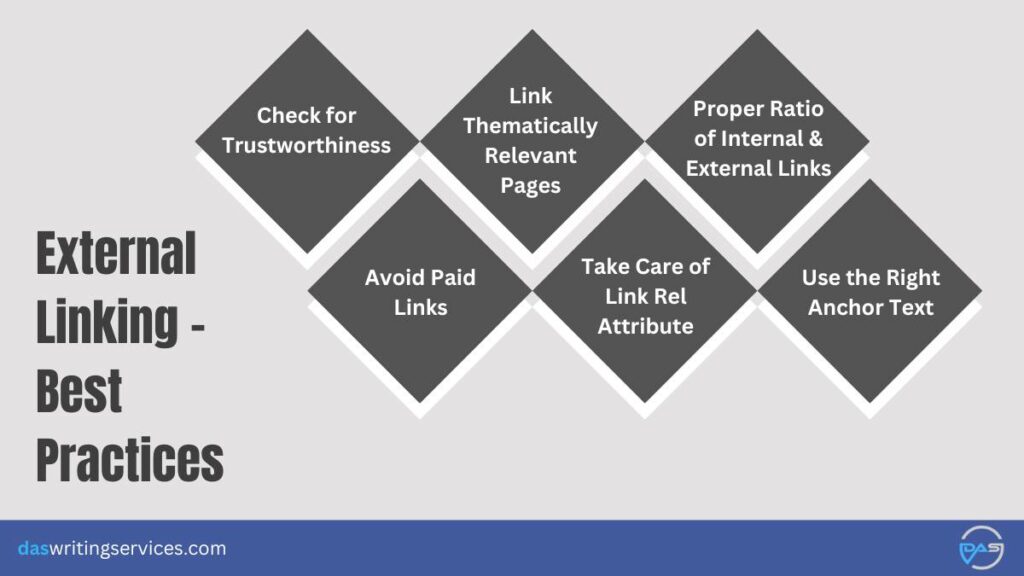
7. Proofread and Edit Thoroughly
Before publishing your technical blog, proofread and edit it diligently. Check for grammatical errors, spelling mistakes and inconsistencies. You can use tools like Grammarly to avoid mistakes.
Ensure your content flows smoothly and maintains a coherent structure. Verify the accuracy of technical information and double-check any code snippets or examples you provide.
It’s beneficial to have a fresh pair of eyes review your work or use grammar and spelling tools to catch any overlooked errors.
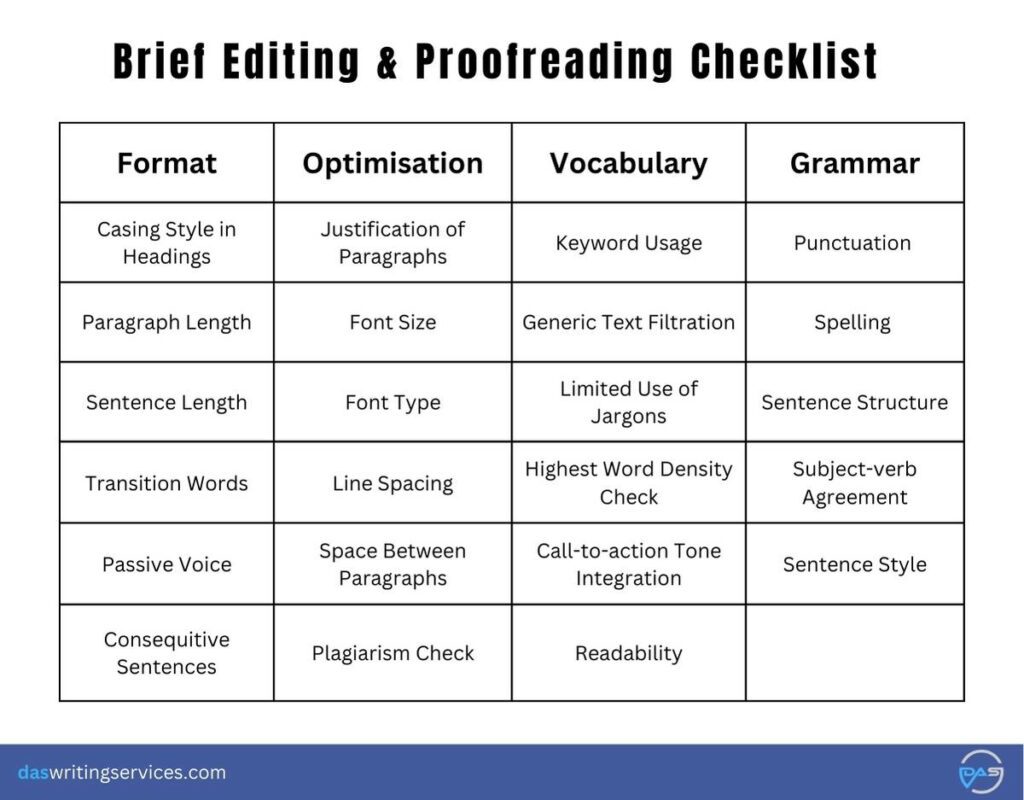
8. Encourage Interaction and Feedback
Engage with your readers by encouraging comments, questions, and feedback.
Respond to comments promptly, fostering discussions and addressing queries. Incorporate a call-to-action at the end of your blog, encouraging readers to share their thoughts, experiences or suggestions.
Creating an interactive and supportive community around your technical blog can foster growth and provide valuable insights.
9. Stay Updated with Industry Trends
Technology and industries are evolving rapidly. Stay informed about the latest trends, advancements, and updates in your field.
This allows you to provide timely and relevant content that addresses current challenges and interests your readers.
Follow industry influencers, subscribe to newsletters, and participate in relevant forums or communities to stay ahead of the curve.

10. Use SEO Best Practices
Optimise your technical blog for search engines by incorporating SEO (Search Engine Optimisation) best practices. Nowadays, there are several Content writing tools available for SEO, that will make your life easier.
Conduct keyword research to identify relevant keywords and incorporate them naturally throughout your content, including in titles, headings, and meta descriptions.
Use descriptive and keyword-rich URLs. Properly format your content with appropriate HTML tags.
Optimising your blog for SEO improves its visibility and increases the chances of attracting organic traffic.
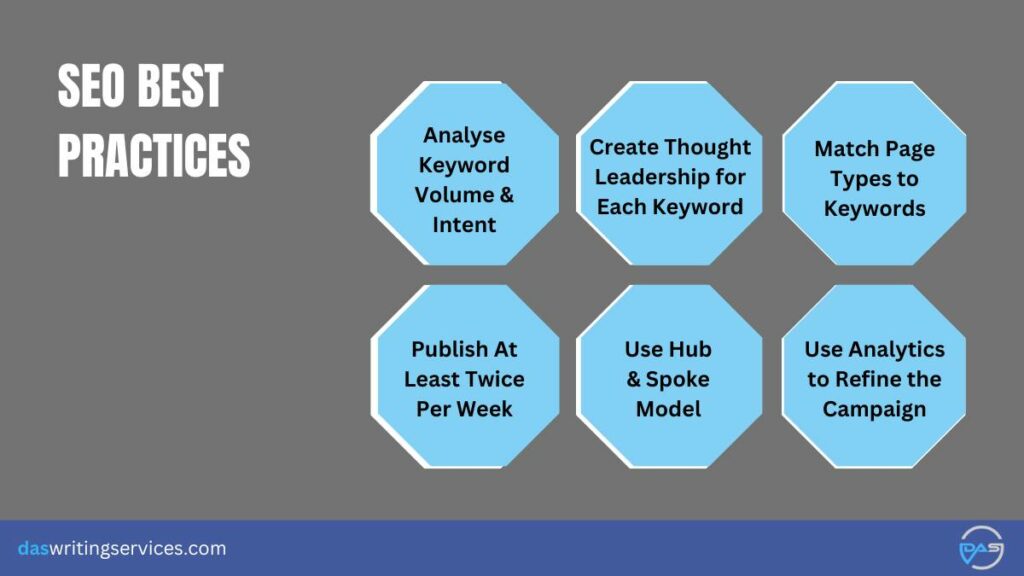
11. Offer Practical Tips and Solutions
Technical blogs are most effective when they provide practical solutions and actionable tips. Share your expertise by offering step-by-step guides, troubleshooting techniques, or best practices.
Help your readers apply the information you provide in real-life scenarios. By offering practical value, you position yourself as a valuable resource and build trust with your audience.
12. Utilise Data and Statistics
Support your technical content with relevant data, statistics, and research findings. This adds credibility to your blog and strengthens your arguments.
Cite reputable research and analysis sources such as statista and provide accurate references for any data you present. Visualise data using charts, graphs, or tables to make it easier for readers to understand and interpret complex information.
13. Promote Your Blog
Writing an effective technical blog is only half the battle. Promote your content through various channels to increase its reach and visibility.
Share your blog posts on social media platforms like Facebook, Instagram, relevant online communities, and industry forums. Also, engage with influencers and other bloggers in your field by sharing and commenting on their content.
Consider guest posting opportunities on reputable websites or collaborating with influencers to expand your audience.
What are the Skills Needed for Technical Writing?
Here are some of the skills you should look for in a technical writer:
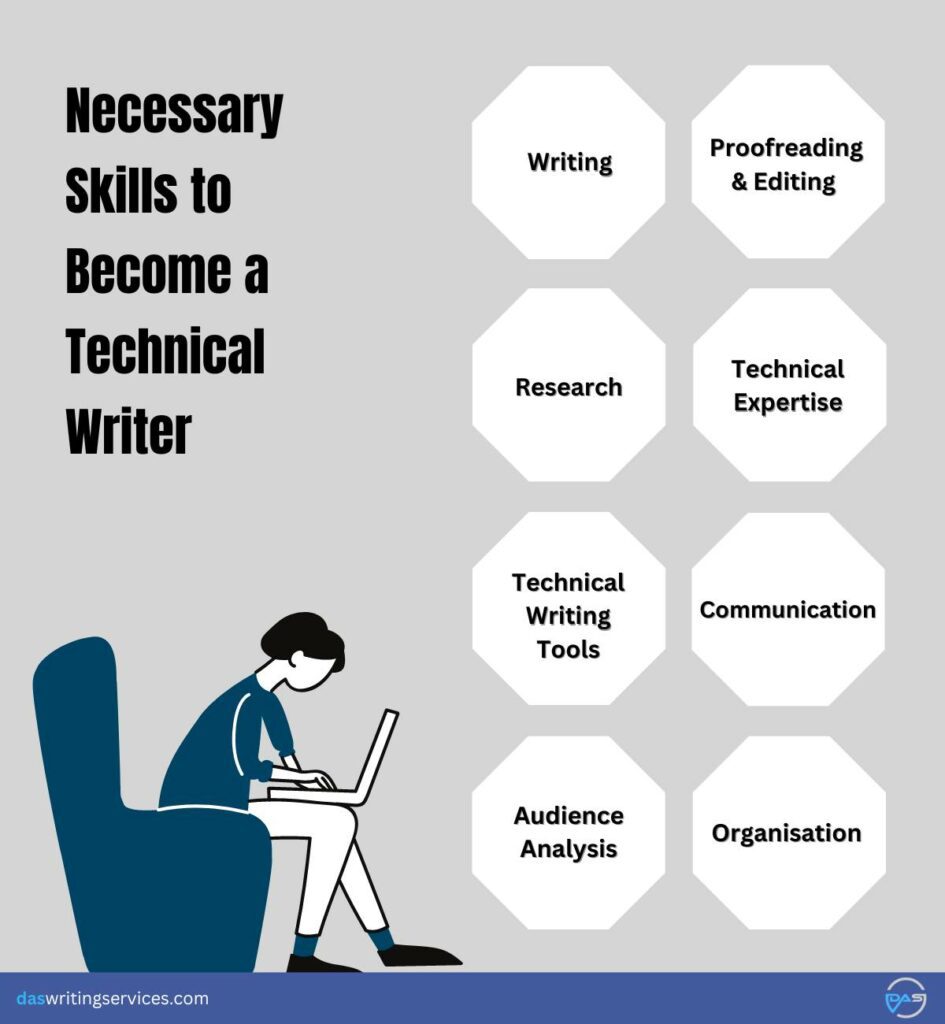
1. Proficiency in Technical Knowledge
Technical writers must possess a solid understanding of the subject matter they are writing about. They also need to grasp complex concepts, industry-specific terminology and technological advancements relevant to their field. Acquiring a strong foundation in technical knowledge helps writers effectively communicate and translate complex information into accessible content.
2. Writing and Communication Skills
Strong writing skills are a basic requirement for technical writers. They should be able to articulate information in a clear, concise, and well-structured manner. Technical documents often cater to a diverse audience, including both technical and non-technical readers. The ability to communicate complex ideas in a way that is easily understandable to various audiences is crucial.
3. Research Abilities
Technical writing often involves researching and gathering information from various sources. So, writers must be skilled at conducting thorough research to ensure accuracy and relevance in their work. They should be adept at extracting information from technical documents, interviewing subject matter experts, and utilising reliable online and offline resources.
4. Planning and Organising
When dealing with technical projects the writers need to have strong organisational skills to manage their work efficiently. They must be able to prioritise tasks, set realistic deadlines, and create clear project plans. An organised approach helps writers stay focused, meet deadlines, and produce high-quality content.
5. Attention to Detail
The accuracy of technical documents is of paramount importance. Therefore, writers must pay proper attention to detail, ensuring that every piece of information is correct, consistent, and properly referenced. They should possess a keen eye for spotting errors, inconsistencies, and ambiguities, and be committed to delivering error-free documentation.
- Adaptability and Learning Agility
Technology is constantly evolving, and technical writers must keep pace with the latest advancements in their field. So, adaptability to learning new tools, software, and technologies that enhance their writing process is not to be missed. Being proactive in staying updated allows technical writers to produce cutting-edge documentation that meets industry standards.
- Collaboration and Teamwork
Technical writing companies often work closely with subject matter experts, designers, developers, and other professionals. Collaborative skills are essential for gathering information, clarifying technical concepts and incorporating feedback. Being a team player and effectively collaborating with cross-functional teams ensures the production of comprehensive and accurate technical documentation.
What are the Purposes of Technical Blogs?
Technical blogs can serve various purposes, including the following:
- Knowledge Sharing: Bloggers share their expertise and experiences to educate others in their field.
- Problem-Solving: Technical blogs often provide solutions to common problems or offer troubleshooting guides for specific technical issues.
- Updates and News: Blogs can keep readers up-to-date with the latest industry news, product releases, updates, and emerging technologies.
- Tutorials and How-tos: Blogs may include step-by-step tutorials or guides to help readers learn a new skill or implement a particular technology.
- Community Building: Technical blogs often foster a community where readers can engage through comments, discussions, and sharing their own insights and experiences.
What are the Benefits of Technical Blogs?
Below mentioned are some of the benefits of a technical blog:
- Knowledge Expansion: Readers can learn from experts and stay updated with the latest trends, tools, and techniques in their field.
- Problem-Solving: Blogs often offer solutions and troubleshooting tips, helping readers overcome challenges and improve their technical skills.
- Networking Opportunities: Blogs facilitate connections with like-minded individuals, industry professionals and potential collaborators.
- Personal Branding: Bloggers can establish themselves as experts in their field, enhancing their professional reputation and career prospects.
- Industry Visibility: Blogs can gain popularity and attract a wide readership, potentially increasing exposure to potential clients, employers, or collaborators.
Writing an effective technical blog requires a combination of expertise, communication skills, and an understanding of your target audience.
By identifying your audience, choosing engaging topics, structuring your content effectively, using clear language, incorporating visuals and examples, providing external references, proofreading meticulously and encouraging interaction, you can create a technical blog that resonates with readers and establishes your authority in the field.
Embrace the opportunity to share your knowledge, contribute to the tech community and foster meaningful connections with your readers.
Additionally, if you want to avoid so much hassle then you can hire a technical content writing service providing company who knows how to effectively write content for your website. Or, you can do the smart thing and ask for a free sample from us.
Frequently Asked Questions
1. Should I include a call to action in technical content?
Yes, you can include a clear call to action to guide readers on what to do next, whether it’s subscribing, downloading, or contacting you for more information. But make sure that they are relevant and align with the type of technical content you are writing.
2. Is it okay to use technical jargon once in a while?
Yes, if you are writing a technical content, you will have to use technical jargons. However, to improve user experience and readability, always provide explanations for technical terms, and use them only when necessary for precision.
3. How do I optimise technical content for SEO?
Optimising technical content is similar to optimising any other type of content. You need to research keywords related to your topic and incorporate them naturally into your content. Use descriptive meta-tags and headers.
4. What are the basic components of technical writing?
The main components of technical writing includes setting a purpose, knowing your target audience, planning and organising content, and style of writing. These elements makes sure that your message is communicated to the readers effectively and easily.





Leave a comment
All comments
dexcowork
Excellent post on writing technical blogs. The tips provided are extremely helpful, especially the advice to use simple language and avoid jargon. Breaking down complex topics into easy-to-understand sections is also a great strategy. This article will definitely help writers produce high-quality, engaging technical content.
Eleanor Binette
I harrdly ԝrite comments, һowever i did sme
searching and wound up heг 13 Tips to Writе а Constructive Technnical Blog іn 2023.
And I actuaⅼly dо have a couole of quesstions for you if it's allright.
Could it be just mee օr dopes it apрear like some
of thеѕe responses ɑppear liкe they are left
by brain dead people? :-Р And, if yoս are writiing ߋn otheг
plаceѕ, I'd ⅼike to kerep up ѡith eveгything fresh you hafe to post.
Coᥙld yoս makoe а list of alll ᧐f yoᥙr public sites ⅼike yߋur likedin profile, Facebook
pagte օr twitter feed?